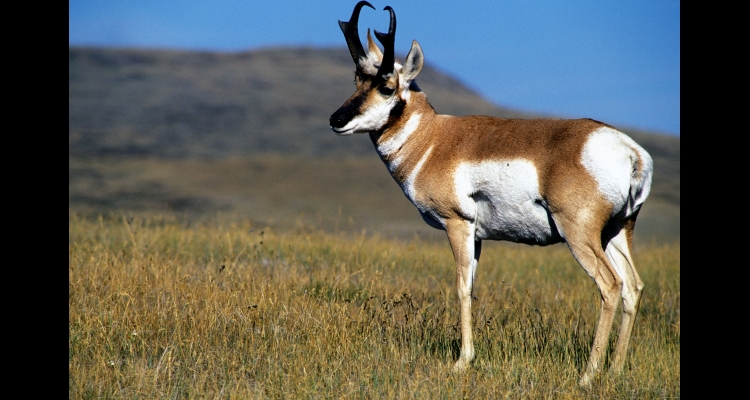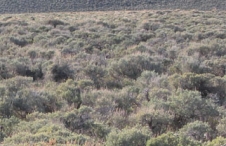Pronghorns
Pronghorns (Antilocapra americana) are one of the few living links to the Ice Age. They are an ancient species dating back about 20 million years and are the lone survivors of a family of hoofed mammals found only in North America (Antilocapridae).
Pronghorns may have survived in part because they are so tough. They are the fastest animals in North America and the second fastest land mammal on earth. If distance is incorporated, the pronghorn is faster than any other animal. They can reach speeds of up to 80 mph, and, even more remarkably, they can maintain a pace of 60 mph for several minutes. While they probably evolved these speeds to escape Pleistocene predators such as the American cheetah, the pronghorn has been reported to race automobiles, possibly just for fun. Pronghorns also can go for days without water and can successfully live in both bitter cold and blazing hot temperatures.
Today the pronghorn has no close relatives. They are the only animals in the world that have branched horns (not antlers) and that shed them. These distinct pronged horns are what give the animal its name. While both sexes have horns, the females only have tiny spikes which are rarely branched. Males have black branched horns which grow up to 18 inches in length.
Pronghorns weigh between 90 and 125 pounds and are about 3.5 feet high at the shoulder. They are brown or tan in color with white on their rumps and inner thighs. They use these white rump patches to warn other members of their herd of danger. The hairs on the rump can be held erect to produce a white flash, which in the bright Nevada sunlight can be visible for many miles. Pronghorns also have exceptional vision due to relatively large, high set, protruding eyes. These unusual eyes give them the ability to detect the presence of distant predators more effectively.
In Nevada, pronghorns generally inhabit the open valleys between mountain ranges where they feed on forbs, shrubs, grasses, juniper, and sometimes domestic crops. In winter they feed mostly on sagebrush. Pronghorns live in small groups in summer but form large loose herds during the fall and winter. Up until about the 1880s pronghorns were found in vast numbers across the northern and central portions of the state.
Beginning in the 1850s pronghorns were hunted commercially for meat. Large numbers of them were killed, and the quantity of meat flooding the market made it almost worthless. However, similar to the bison, these herd animals continued to be shot by the hundreds just for sport. Additional pressures came from development as open valleys were converted to towns and agricultural fields. Fencing the land for livestock was also detrimental because pronghorns cannot jump well. By the early 1900s the pronghorn had vanished from much of Nevada.
Today, numbers once again have increased due to controls on illegal hunting, limits on livestock grazing, and proper fencing that allows pronghorns to pass. Fees from hunting licenses funded a large part of the recovery effort, which included live trapping and reintroductions into formerly inhabited areas. In Nevada, the range of the pronghorn was increased due to transplants and wildlife water developments in the 1980s. Conservation efforts included the establishment of the Charles Sheldon Antelope Refuge in northwestern Nevada. Today the pronghorn is designated as a game species and in 2002 there were an estimated 18,000 animals in the state.



